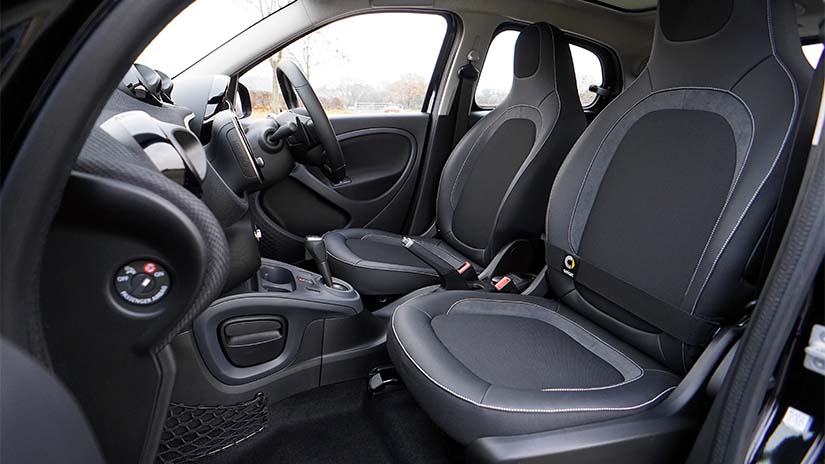
Experienced fleet managers all know that the entry-level safety specification on most vehicles simply isn’t good enough. So what is the minimum safety spec for fleet vehicles?
Whether you’re transporting people or flower pots, today’s fleet owners need to pay careful attention to the spec sheet when it comes to safety. Vehicles are still considered a luxury purchase, even if it’s a panel van, and this age-old tradition means that the majority of cars will come with a radio as standard long before safety features are added to the list. This is slowly starting to change, but companies and fleet managers need to take more responsibility for the specification choices they make – it’s up to you to ensure your fleet is a safe as possible.
The safety options available depend on the car you’re buying, but most fleet vehicles fall in the ‘affordable’ rather than luxury category, so it’s safe to say your entry-level models will have a fairly sparse list of safety features. Most, however, can either be ordered with additional safety features, or you can negotiate a good deal on higher-spec models.
Fleet owners looking to modernise and optimise their fleets should pay close attention to European legislation, where increased safety standards will soon become mandatory. SA regulations usually follow European trends, so these are always a good indication.
The basics
Although you can still buy some entry-level cars without ABS or airbags, it’s incredibly irresponsible for companies to still make this choice. Not only does it place your drivers in daily danger, but other road users as well. Should one of your vehicles be involved in a serious accident, and the news gets around that your fleet vehicles aren’t even equipped with the bare minimum safety spec, it will be incredibly bad for business. The public demands responsible business operations from all sectors, so safer vehicles are a business-critical decision.
Safe communications
Misperception and clever marketing still have many people convinced that hands-free communication is a luxury. It’s not. No matter what they’re transporting, drivers need to communicate and they need to be able to do so safely. Whether it comes with the car, or whether you add it afterwards, your fleet vehicles need to be equipped with a hands-free telephone feature. You do not want your company associated with accidents caused by drivers calling and texting. And typing up a no-call ‘company policy' is not going to help – it’s 2017, nobody goes all day without speaking on their phone – accept it and invest in the necessary safety features.
Safe navigation
All fleet vehicles should be equipped with up-to-date navigation. In most cases, you can simply spec your cars with an all-in-one navigation and a hands-free system. Although car companies love labelling these as ‘entertainment’ features because they’re usually linked to the vehicle’s sound system. This can often be a hiccup with procurement departments, but this is where fleet managers need to stand their ground, lay out their research, and insist on putting fleet safety first.
‘Advanced’ safety features
It often feels like fleet managers are in a constant battle against vehicle marketing gurus. Most manufacturers want to brag about their ‘advanced’ safety features while fleet managers simply want these to be listed as standard so they can add them to their fleets. Many of these so-called advanced features have been around for years, cost less than you think, and really should be part of the standard fleet safety package. For example:
- Automatic braking – if a driver doesn’t react fast enough, the car brakes for you. It’s a feature that’s been around for years, has saved many lives, and can be found hidden in most spec sheets.
- Driver alert systems – usually an audible alarm that goes off when drivers veer out of their lane, or change lanes without indicating. The goal is to keep drivers alert, and in many cases, it helps create good driving habits.
- Cruise control or speed limiting – this can often be done via telematics systems as well, but this is a great safety feature for small fleets who don’t employ integrated fleet telematics systems. It places less strain on the driver and also ensures speed is kept below the legal limit.
Many articles are written about vehicles being fit for purpose and, sadly, most still exclude safety features. Over the past few years, many car companies have taken great strides to include more safety vehicles in their entry-level models and to also package more advanced safety features to make them more affordable. However, the responsibility still lies with fleet managers to ensure you’re making the responsible choice when choosing your vehicle spec.
Safety features are no longer a luxury, but an investment. Keep your fleet safe.
Join the world of fleet management and receive tips and insights straight into your inbox. Click here to join.
